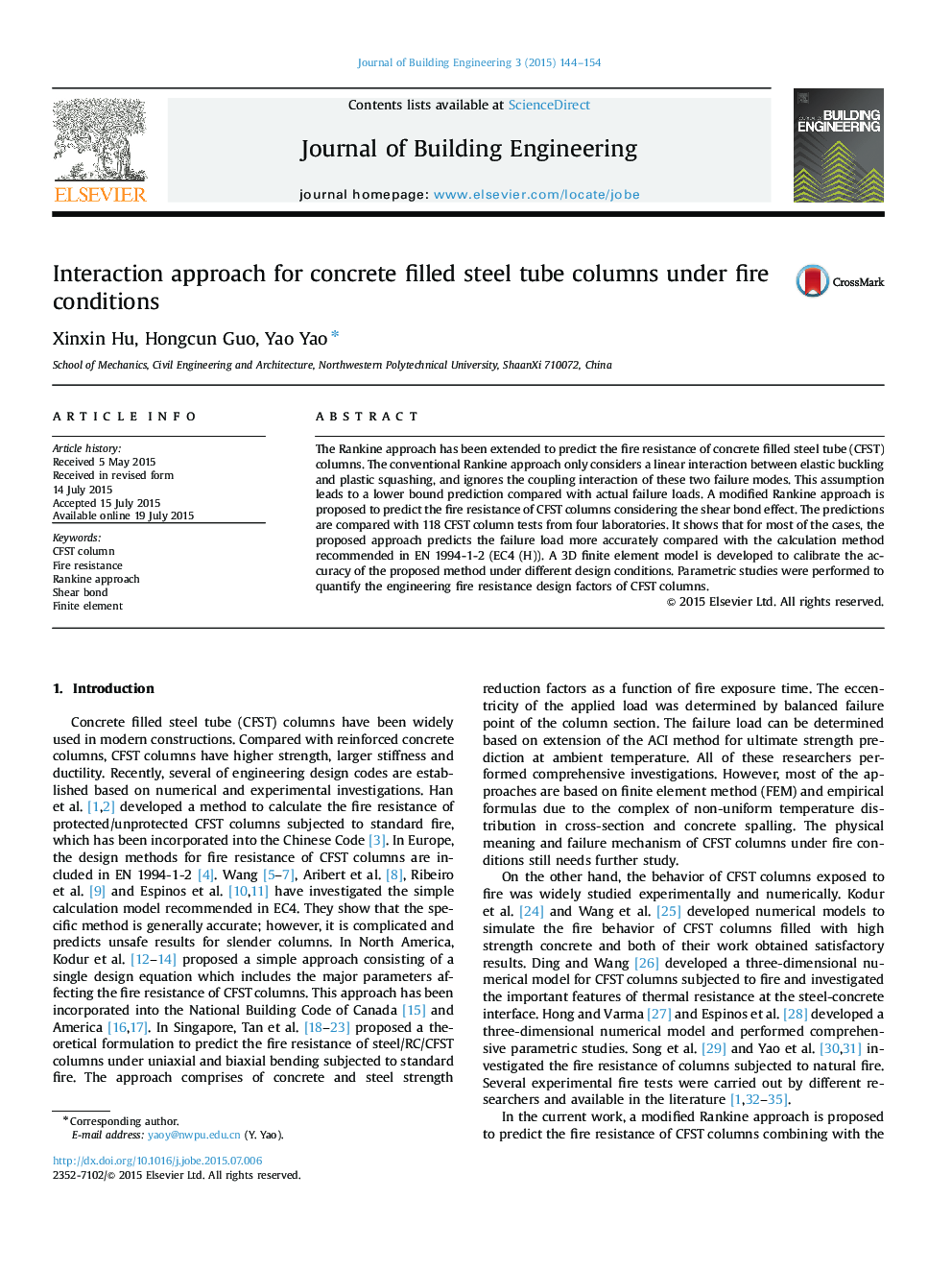| Article ID | Journal | Published Year | Pages | File Type |
|---|---|---|---|---|
| 283873 | Journal of Building Engineering | 2015 | 11 Pages |
•A modified Rankine approach is developed to predict fire resistance of CFST columns considering shear bond effect.•Theoretical basis and the physical meaning of shear bond are discussed.•A 3D finite element model is developed to predict the behavior of CFST columns under fire conditions.•Four case studies comprised of 118 CFST columns from different labs are analyzed to verify the proposed approach.
The Rankine approach has been extended to predict the fire resistance of concrete filled steel tube (CFST) columns. The conventional Rankine approach only considers a linear interaction between elastic buckling and plastic squashing, and ignores the coupling interaction of these two failure modes. This assumption leads to a lower bound prediction compared with actual failure loads. A modified Rankine approach is proposed to predict the fire resistance of CFST columns considering the shear bond effect. The predictions are compared with 118 CFST column tests from four laboratories. It shows that for most of the cases, the proposed approach predicts the failure load more accurately compared with the calculation method recommended in EN 1994-1-2 (EC4 (H)). A 3D finite element model is developed to calibrate the accuracy of the proposed method under different design conditions. Parametric studies were performed to quantify the engineering fire resistance design factors of CFST columns.
